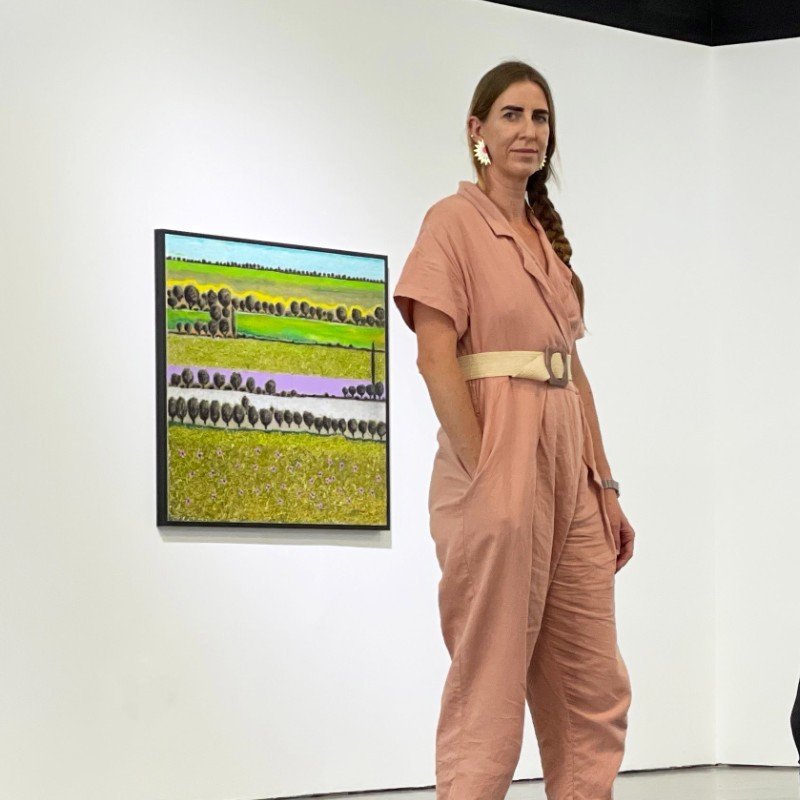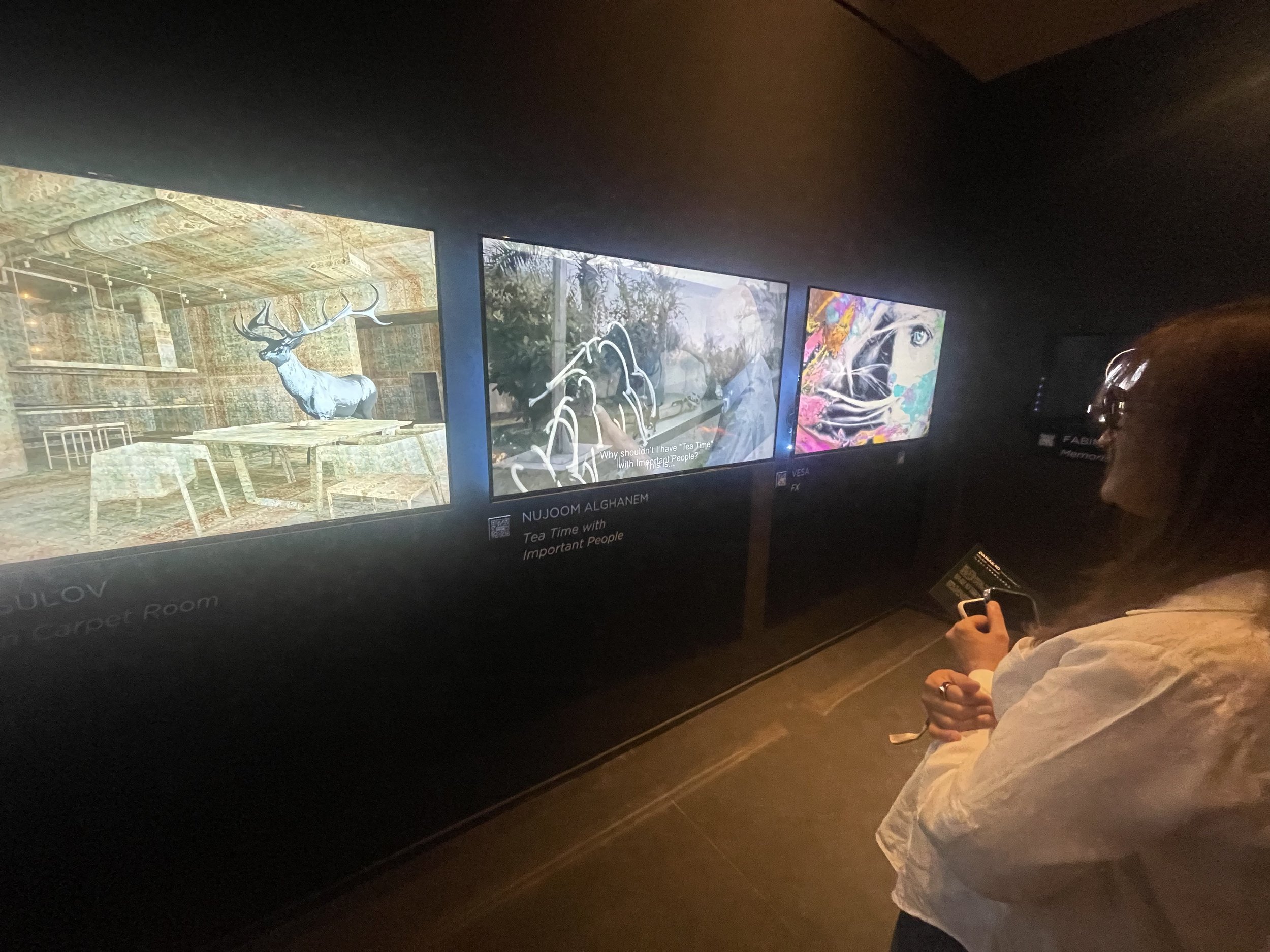NFTs Boom at Art Dubai 2023 as Curation Needs and the Collectors of the Future Gain Attention
New opportunities in digital art take the stage at Dubai Art 2023

Two years ago, Jen Stelco was roaming the Art Dubai exhibition with an iPad and a presentation.
“Have you heard of non-fungible tokens?” she asked contemporary galleries’ artists and curators. “Nobody knew anything about it. We got shut down a lot.”
Stelco is an Australian artist who’s been living in Dubai for the past 12 years, working as a painter, muralist, and illustrator. As many other artists have realized, Stelco saw NFTs as a means to monetize digital art, and she soon started selling NFTs on the Super Rare platform. Yet there was still a gap in the curation and education of artists and collectors alike, so the seeds of her NFT consultancy and curating service Morrow were planted.
And even then, it wasn’t easy. Only 12 artists responded to Stelco’s initial invitation. The following year, more artists showed interest, but the crypto winter and crashing prices cast doubt upon the whole space in some artists’ views.
This year, Morrow occupies a large wall-to-wall section in one of the Middle East’s most prestigious art fairs, Art Dubai 2023. For the past 16 years, it has been a mecca for both enthusiasts and high-roller patrons to admire and explore emerging artists from the Middle East, Africa and Southern Asia.
The exhibition gradually introduced digital art in its collections until it finally dedicated a full-fledged section and a speakers stage this year. Located in the traditionally styled Bazar Souq Madinat Jumeirah, Art Dubai Digital is a three minutes walk from the main exhibition.
“This year is different, and the NFT space is much more curated,” Stelco says. Morrow now curates the work of more than 50 digital artists and the collective exhibited what it calls UAE’s first immersive collection, which eliminates barriers for newcomers in the space. Collectors can buy one token for $950, and on a certain date, they receive airdrops from six different artists, giving holders an instant collection to jumpstart their journey.
Stelco says that out of the 300 offered tokens, 260 were already sold. While seasoned collectors track the artists' work on NFT markets like Nifty Gateway and Open Sea, 80 percent of people who bought this collection have never bought an NFT.
Large screens of variable sizes showcased animations and collages, many containing local motifs like camels, hawks, Emirati dirhams, and Burj Khalife. The collection has attracted traditional art aficionados as well.
“This is fine art,” says Stelco. “None of the NFTs come with utility, discounts, or give you a membership to a club.”
Collectors of the Future
A walk around the gallery reveals the unmistakable rising adoption of blockchain technology among digital artists with different goals and strategies.
Wizara featured work from the Middle East and North Africa, hoping the new technology would empower artists from the Global South to break free from the gatekeeping galleries. 6529, on the other hand, caters to seasoned investors and venture capitalists as they acquire blue-chip NFTs, and play the long game, betting on the rising value within the next decade.
Bedu, a UAE web3 company that is building a metaverse platform and curating digital art, follows a token-gated community model. It offers its community a “key pass” that gives them free airdrops and grants them early access to NFTs from its curated artists before the work is available in the open market.
Business is booming, according to Bedu’s Marketing and NFT Director Mohammed Naoufel Madih. “Almost everything is sold out. Perhaps one or two pieces only on display are for sale,” Madih says.
However, Madih believes that the rise of NFT artwork, with its possibility, is not just about money. “Yes, we are doing great, and we are selling,” he said, “but what is important is that this is showcasing the use case of blockchain in the field of art.”
As for artists, they are more bullish than ever on the future of the NFT market.
“I watch my younger brother buying game skins and in-game items, and I know the coming generation is more used to digital ownership,” says Jason Seife, one of the artists curated by Beidu.
Jason Seife chats with visitors in front of one of his NFT rugs
Seife is a digital artist based in Florida. Coming from a Cuban father and a Syrian mother, his work focuses on intertwined identities. He traveled to Syria, Iran, Morocco and Turkey, where he found inspiration for his artwork.
His central piece is inspired by oriental carpet making, giving a modern twist on an ancient art form. It was particularly distinct because of its extremely high level of detail and colorful ornamentation in comparison to the modern, contemporary and abstracts currently prevalent in the rest of the exhibitions.
“Many people were asking whether they can buy the artwork with the accompanied screen,” Seif says, explaining that the vivid details are better enjoyed in a large display. He believes that a new generation of art collectors is more open to the idea of featuring their NFTs and digital art in the physical world rather than keeping it in their wallets or metaverse galleries.
“I have seen a group of schoolchildren walking to my work and watching it in awe,” says Seife. ”These are going to be collectors in the next 10 to 15 years.”


